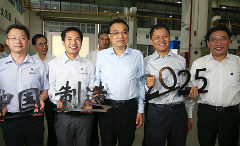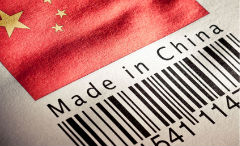Joint efforts to implement Made in China 2025
2017-02-16
english.gov.cn
Twenty departments have been working together on implementing “Made in China 2025”, a roadmap to build China into a manufacturing power.
A planning system, known as “1+X”, was finished in recent days and 11 relevant guidelines have been published for implementation, according to an official from the Ministry of Industry and Information Technology.
The “1+X” was initiated by a leading group led by Vice-Premier Ma Kai to enhance China’s manufacturing prowess.
More than 20 State Council departments participated in the “1+X” initiative, of which “1” stands for “Made in China 2025” and “X” means guidelines for sectors, such as smart and green manufacturing, innovation of high-end equipment, and new material.
The aim of the “1+X” initiative is to make breakthroughs in manufacturing sectors and boost the country’s competitiveness.
“Made in China 2025” was first put forward by Premier Li Keqiang in his government work report in 2015, in which he urged accelerating the transformation of China from a manufacturing giant into a world manufacturing power.
The Premier has reiterated the plan on many occasions and promoted upgrades of China’s manufacturing industry.
He said that China is still in the process of industrialization, which should include the manufacturing sector, but promote innovation and upgrades of the traditional manufacturing industry driven by the new economy.
The industrial innovation combined with Internet Plus, mass entrepreneurship and innovation, and “Made in China 2025” will foster a “new industrial revolution,” the Premier said.
When Premier Li inspected a new plant owned by Dongfeng Commercial Vehicle in Shiyan city, Hubei province last year, he encouraged workers to carry forward quality revolution with a spirit of craftsmanship, to promote the overall upgrade of Made-in-China products.
The calls echo one of the “Made in China 2025” aims to focus on quality.
Instead of compulsory orders, the 11 guidelines are more suggestions. They are aimed at enabling the market to play a bigger role in resource allocation, and demand that governments at all levels, enterprises, research institutions, universities and colleges, as well as financial institutions, make an effort to implement the plan.
In an instruction last year, Premier Li called for a better environment for market access, resource allocation and cost reduction for the development of the advanced manufacturing industry. He also encouraged the integration of “Made in China 2025” with initiatives such as Internet Plus and entrepreneurship and mass innovation, with an emphasis on craftsmanship spirit.


